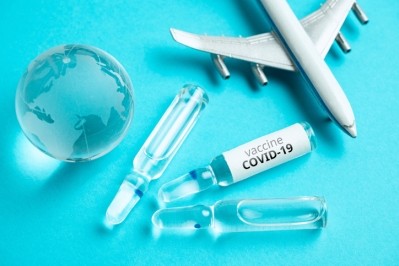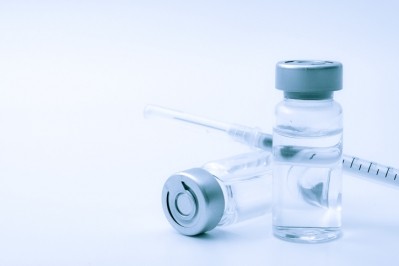Pooled efficacy of 70% for AstraZeneca and University of Oxford COVID-19 vaccine: 'It will have an immediate impact on this public health emergency'

Two different dosing regimens demonstrated efficacy with one showing a better profile:
One dosing regimen showed vaccine efficacy of 90% when AZD1222 was given as a half dose, followed by a full dose at least one month apart, and another dosing regimen showed 62% efficacy when given as two full doses at least one month apart. The combined analysis from both dosing regimens resulted in an average efficacy of 70%, said the company.
Importantly, there were no hospitalizations or severe cases of COVID-19 in patients who received the vaccine, said the company. No serious safety events were reported, with the vaccine well tolerated across both dosing regimens.
There were a total of 131 COVID-19 cases in the interim analysis.
Other trials in the US, Japan, Russia, South Africa, Kenya and Latin America expected to enroll up to 60,000 participants.
AstraZeneca said it will submit the data to authorities around the world that have a framework in place for conditional or early approval, and that it will seek an Emergency Use Listing from the World Health Organization (WHO) for an accelerated pathway to vaccine availability in low-income countries.
It said it is making rapid progress in manufacturing with a capacity of up to 3 billion doses of the vaccine in 2021 on a rolling basis, pending regulatory approval.
Professor Andrew Pollard, chief investigator of the Oxford Vaccine Trial at Oxford, said: “These findings show that we have an effective vaccine that will save many lives. Excitingly, we’ve found that one of our dosing regimens may be around 90% effective and, if this dosing regime is used, more people could be vaccinated with planned vaccine supply.”
Pascal Soriot, CEO of AstraZeneca, said: “Today marks an important milestone in our fight against the pandemic. This vaccine’s efficacy and safety confirm that it will be highly effective against COVID-19 and will have an immediate impact on this public health emergency. Furthermore, the vaccine’s simple supply chain and our no-profit pledge and commitment to broad, equitable and timely access means it will be affordable and globally available, supplying hundreds of millions of doses on approval.”
Ensuring society can reopen
Dr Adam Barker, healthcare analyst, Shore Capital, commenting on the findings, said the data, overall, was encouraging.
“Any vaccine with an efficacy of 70%, which can greatly reduce the number of hospitalizations, is going to be very important in allowing society to reopen. Indeed, an efficacy of 60-70% is in line with what most people would have expected prior to the trials starting.”
He said the minimum required efficacy would be 50% and that hopefully the two-dose regimen, which has an efficacy of 62%, will stay above this level as the data matures.
“However, the half dose/full dose regimen (an efficacy of 90%) is unlikely to fall below this 50% threshold and so we expect regulators would focus on this aspect/the pooled data, as opposed to the regimen which uses two doses alone.”
One of the major benefits of AZD1222 is its ability to be stored, transported and handled at normal refrigerated conditions (2-8°C) for around six months, said Dr Barker.
“This will make the logistics of vaccinating the vast number of people targeted (20% of the world may be at risk of severe COVID-19) much, much simpler. AstraZeneca are also producing the vaccine at cost (approx. US$2-3 per dose), as opposed to Pfizer/BioNTech (approx. US$20 per dose) and Moderna (approx. US$32-37 per dose) and so this will make the product much more accessible to countries in the developing world given the issues with storing Pfizer/BioNTech’s and Moderna’s vaccine and the much lower cost,” he noted.
Overall, today is another major turning point in the fight against COVID-19, said the analyst.
“Although many questions remain on the data (e.g. efficacy by age group? Duration of the vaccine? What will the final efficacy actually be? What explains the differential efficacy by dosing regimen?) a pooled efficacy of 70% is more than sufficient to make a very meaningful contribution to ending the pandemic.”
Large-scale batch manufacturing
John Dawson, CEO of Oxford Biomedica, the company that signed an 18-month supply agreement in September with AstraZeneca for large-scale commercial manufacture of AZD1222, said he was delighted with the positive results shared today.
“We are working hard to provide AstraZeneca with multiple large-scale batches of AZD1222 from our recently approved commercial manufacturing centre Oxbox,” he added.
Under the terms of that deal, the pharma group will pay Oxford Biomedica £15m (US$20m) upfront as a capacity reservation fee.
Subject to satisfactory scale up of manufacturing capacity and continuation of the vaccine programme, Oxford Biomedica would expect to receive additional revenue in excess of £35m plus certain materials costs for the manufacture of multiple large-scale batches of AZD1222 until the end of 2021.
As part of the agreement, Oxford Biomedica is reserving capacity for AstraZeneca in up to three manufacturing suites in the Group’s new 7,800 m2 commercial manufacturing centre, Oxbox, for an initial 18-month period. That new GMP facility is suitable for manufacturing viral vectored vaccines and gene therapy vectors up to 1,000 litre scale.
The data
The partners said the pooled analysis included data from the COV002 Phase II/III trial in the UK and COV003 Phase III trial in Brazil.
COV002
COV002 is a single-blinded, multi-center, randomized, controlled Phase II/III trial assessing the safety, efficacy and immunogenicity of AZD1222 in 12,390 participants in the UK. Trial participants to date are aged 18 years or over, who are healthy or have medically stable chronic diseases and are at increased risk for being exposed to the SARS-CoV-2 virus. Participants receive one or two intramuscular doses of a half dose (~2.5 x1010 viral particles) or full dose (~5x1010 viral particles) of AZD1222 or comparator, meningococcal vaccine MenACWY. Participants have blood samples drawn and clinical assessments for safety as well as immunogenicity at multiple timepoints up to one-year post-vaccination. Suspected cases presenting with compatible symptoms were tested for virological confirmation by COVID-19 PCR. In addition, weekly swabbing are done for detection of infection and assessment of vaccine efficacy against infection.
COV003
COV003 is a single-blinded, multi-center, randomized, controlled Phase III trial assessing the safety, efficacy, and immunogenicity of AZD1222 in 10,300 participants in Brazil. Trial participants to date are aged 18 years or over, who are healthy or have medically stable chronic diseases and are at increased risk for being exposed to the SARS-CoV-2 virus. Participants are randomized to receive two intramuscular doses of a full dose (~5x1010 viral particles) of AZD1222 or comparator, meningococcal vaccine MenACWY as first dose and a saline placebo as second dose. Participants have blood samples drawn and clinical assessments for safety as well as immunogenicity at multiple timepoints up to one-year post-vaccination. Suspected cases presenting with compatible symptoms were tested for virological confirmation by COVID-19 PCR.
Vaccine development
AZD1222 was co-invented by the University of Oxford and its spin-out company, Vaccitech. It uses a replication-deficient chimpanzee viral vector based on a weakened version of a common cold virus (adenovirus) that causes infections in chimpanzees and contains the genetic material of the SARS-CoV-2 virus spike protein. After vaccination, the surface spike protein is produced, priming the immune system to attack the SARS-CoV-2 virus if it later infects the body.














